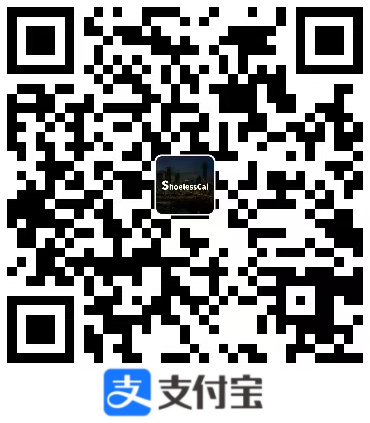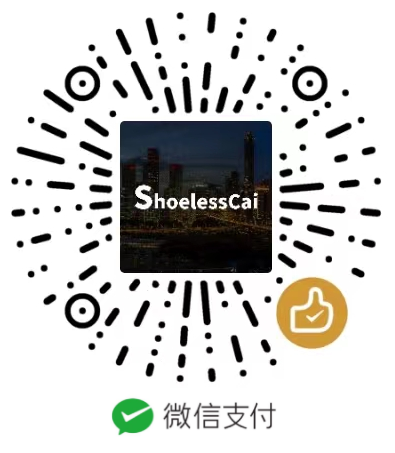
彭博推送 | 我与星巴克的故事
文章由 Jingyi 人工翻译。
01 译文 上一周,星巴克出台了一系列改变,目标是将自己的咖啡做得更加吸引人,特别是针对那些想在门店用陶瓷马克杯喝咖啡的客人。更别说那些改变是否会让青少年反感,这些人永远都喜欢甜食,能发朋友圈的饮料,Deena Shanker, Daniela Sirtori 特别为彭博商周写的报导。我们都知道星巴克不再有免费水了。
ceramic mug 陶瓷马克杯
be a turnoff for teens 让青少年反感
今年早些时候,6月的时候吧,布鲁克林公园的星巴克,小孩子开始排队涌入(trickle in)。第一小组,两个女孩一个男孩,然后是两个男孩子,穿着私人学校的制服。Victor 12 岁,每天要停留 1-2 次,无论是否会购买千层酥,去冰的草莓柠檬奶昔,Frappuccino 饼干,甚至免费水。Wren and Zoe,都是 15 岁,随后到来,都有个性化点单:草莓柠檬奶昔,火腿和瑞士牛角面包。Wren 说到,她 10 岁的时候就来这里买东西,Zoe 声称 2 岁开始的,但是两人 都同意一开始买的是蛋糕。Wren 说她父母经常反对,担忧并不健康。但是,“所有人 都理解了,我父母非常沮丧,因为我没理解。”现在这个女孩子每个礼拜来 4 次。
trickle in 涓涓细流
真正的客流下午 3 点开始,一组 8 年级的女孩子,几个人略有些变化,但是都是基于草莓奶昔的,糖分的量也一样,称为 Butterfinger,加半杯咖啡因的量。冷饮加一些泡沫,无止尽的调试,才是 Z 世代的需求特点,这些人目前 11 至 27 岁,星巴克将其定义为“关键客群”临时 CEO Howard Schultz 这样表达几年前产生收入的来源。他说道,自定义饮品(Customization),提升准入标准,带来了“为 Z 世代带来色彩斑斓和精彩纷呈,他们会立刻发在社交媒体上。”
key customer cohort 关键客群
customization 自定义
有些斜坡小孩会担任兼职工作,来资助他们买星巴克,通常都是微不足道的钱。有些人经常从银行提款,拿的父母的钱。“我只是渴望金钱”一个小孩说到。有些人依赖的是,青少年零花钱:贺卡。“所有人都知道,我所希望的就是喝星巴克。”14 岁的 Tessa 说到。
potent form 有力的形式
chimes in 报时,钟声
“星巴克赚取我们所有的钱,但是我无法停止。”她的朋友 Maya 说到。
“这是一种上瘾。”有些人说起常规话(chimes in)。
“这是消费主义。”另一个孩子说。
Maya 总结:“每天都有理由(购买)。”
对话进入秋天,他们进入不同高中。他们都会去到离他们最近的星巴克,一个学生说到,她几乎在学校哭出来,当他知道最近的星巴克要走 18 分钟的时候,他朋友立刻纠正,她确实哭了:“你眼中有泪!”
一对类似的青少年双胞胎总是匆匆来到全国各地的星巴克。布鲁克林小孩,规划秋天的物流,Aaron 13岁,以及 Aryanna 15 岁,和他们的母亲、数学老师在 Dallas 星巴克野餐。尽管他们偏向无咖啡因大杯摩卡星冰乐 —— 咖啡因总是让他们头疼 —— 进一步点冰柠檬水,这个饮料> 约莫星冰乐一半 咖啡因,以及 33 克砂糖,等同于超过 4 个冰棍的糖分。在 Greenvale,纽约,两个小孩,8岁,11岁,获得夏日树莓奶昔的容易程度,就像滑动手表一样简单。当地高中生说到,她有个老师,在午餐时候点学生点单。
Bomb Pop popsicles 冰棍
mapping out autumn logistics 规划秋天物流
出售冷饮、甜的热饮给到中学、高中生,并非完全初始目的,当 CEO Schultz 开第一家店的时候。店名 Il Giornale,商业模型学的是意式浓缩咖啡店,1985 年的风格。但是,他逐渐发现。迎合美国大众的喜好,要求进一步地转向背离初始古怪的想法。当大多数客户是成年人的时候,星巴克也开始出售很多全糖、全咖啡因给到青少年。开始时候,也非意愿,但是逐渐发展成音乐会式的整齐划一,来迎合年轻人,逐渐渗透星巴克的饮品,并且有策略地开辟市场,来争取终身客户。“这时候非常长期的博弈”Robert Byrne 说到,他来自市场调查公司。
veer 转向。专四、专八词汇
quaint concept 古怪的概念
tweens and teens 青少年
麦当劳的供应链,长期以来引起大众健康呼吁的愤怒,因为他们使用卡通吉祥物,以及便宜的塑料玩具,来吸引有小孩的家庭,消费高糖、高卡路里食物。然而,星巴克目前在美国有更多门店,比起金拱门(the Golden Arches),已经避开一些过度技术,而且针对稍微年长的客户,大多数情况下允许这样的批判存在,甚至不惜将有吸引力的第三空间,改成中上层专业人士的青少年商场。近几年,星巴克执行官吹嘘,Z 世代拥有最高的“品牌热爱”,针对任何客群的咖啡供应。Greenlight 是一家储蓄卡公司,针对小孩的,大多数是 5-18 岁,星巴克是第 5 大消费在刷卡消费排名上,去年数据显示,只比亚马逊、Target、苹果、麦当劳差一些。星巴克礼品卡(gift card),也是青少年最青睐的食品饮料消费卡,比起 Chick-fil-A 和麦当劳更受欢迎,依据市场调查公司 Kidsay 数据。
ire 愤怒
eschew 避开
emporium 商场
coveted 令人垂涎的
“这是毫无置疑的‘终点’”针对课间、放学后的学生,Byrne 说到。这个习惯形成于父母接小孩期间,从学校到任何其他地方,以及社交媒体增强了小孩购买冲动。于是,喝星巴克就由父母付钱,随着他们开始有手机,大约在 9 岁的时候。他们会用 APP 预定,依据 Technomic 调研结果。Dana Pellicano 星巴克产品官说到,父母希望“提供小孩能力轻易载入星巴克礼品卡,使得小孩能进入星巴克并且买点什么,让小孩坚信能使得他们下午清醒的。”
bankrolled 提供资金
正如很多父母考虑的,至少并非 TikTok 或者另一个电子游戏,或者甚至更加昂贵的门店,例如 Sephora。就是糖分。“你知道我们充钱充了多少次吗?”Jazha Cabrera 问道,他有个 13 岁的儿子,经常和她一起(去星巴克),现在他和他的朋友一起去。她说到她每隔几天,往儿子账户充钱 50 美刀。如果儿子请客,充更多钱。“如果他在做好事,还通过考试,还做家务——我还能说啥?拒绝吗?”
02 原文 Last week, Starbucks Corp. rolled out a series of changes aimed at making its cafes more appealing to coffee drinkers who want to hang out a while with a ceramic mug. Not mentioned was whether those changes would be a turnoff for teens, who’ve been drawn to all its sweet, Instagrammable drinks, as Deena Shanker and Daniela Sirtori wrote for Businessweek in October. (But we do know the free water, without purchase, is gone.) You can find the whole story from the archive online here. You can also listen to it.
Early one afternoon in June at a Starbucks in Brooklyn’s Park Slope neighborhood, the kids start to trickle in. First a small group, two girls and a guy. Then two boys in private school uniforms. Victor, 12, stops in once or twice a day, he says, whether for a pastry, a medium no-ice strawberry açaí lemonade Refresher, a cookie Frappuccino or even just free water. Wren and Zoe, both 15, arrive next, with identical orders: venti strawberry açaí lemonade Refreshers and ham and Swiss croissants. Wren says she’s been coming since she was 10, while Zoe claims to have started at 2, but both agree it all began with cake pops before they moved up the menu ladder. Wren says her parents used to object, worried it wasn’t healthy. But then “everyone started getting it, so my parents would feel bad if I didn’t.” The girls now come in about four times a week after school.
The real rush starts around 3 p.m. In one group of eighth-grade girls, several get a slightly different variation of a grande strawberry açaí Refresher—with the same amount of sugar as a Butterfinger, plus the caffeine of about a half an average cup of coffee. Cold drinks in bright hues and endless configurations are exactly what’s in demand among Generation Z, those currently age 11 to 27 as the company defines it and a “key customer cohort for Starbucks,” as then-interim Chief Executive Officer Howard Schultz put it on an earnings call a couple of years ago. Customization, he said, was “raising the ticket” and bringing “color and excitement to the Gen Z audience, and they immediately p ut it on social media.”
Some of the Park Slope kids work part time to finance their Starbucks habit—babysitting money mostly. Some make regular withdrawals from the Bank of Mom & Dad. “I just beg for money,” one says. Others rely on a potent form of teen currency: gift cards. “Everybody knows all I want is Starbucks,” says Tessa, 14.
“Starbucks does take all our money, but we can’t stop,” says her friend Maya.
“It’s addiction,” someone else chimes in.
“It’s consumerism,” says another.
Maya sums it up: “There’s an excuse every day.”
The conversation turns to the fall, when they’ll scatter to different high schools. Each has already gamed out their closest Starbucks. One says she “almost cried” at school when she realized the nearest location would be an 18-minute walk. Her friend quickly corrects her, saying she did cry: “There were tears in your eyes!”
A similar tween and teen rush takes place at Starbucks locations across the country. While the Brooklyn kids are mapping out autumn logistics, siblings Aaron, 13, and Aryanna, 15, are camped out with their mom and math tutor at a Starbucks in Dallas. Although they used to be partial to decaf grande mocha Frappuccinos—the caffeine gave them headaches—they’ve moved on to grande frozen mango dragonfruit lemonade, which has about half the caffeine of the Frap and 33 grams of sugar, the equivalent of more than four Bomb Pop popsicles. In Greenvale, New York, for two kids—an 8-year-old and an 11-year-old—getting their venti summer-berry Refreshers is as easy as a swipe of a smartwatch. One high schooler at the same location says she had a teacher who was kind enough to pick up student orders during lunch.
Selling cold, sugary beverages to middle and high schoolers wasn’t exactly the original vision when Schultz opened his first coffeehouse, Il Giornale, modeled after Milan’s espresso bars, in 1985. But he eventually discovered that catering to the tastes of the American masses would require veering further and further away from that quaint concept. While the vast majority of customers today are adults, Starbucks Corp. also sells a whole lot of sugar and caffeine to tweens and teens. What was begun reluctantly has evolved into a concerted effort to court young people that permeates product development and marketing in a strategic effort to create lifelong customers. “That is very much a long-term game,” says Robert Byrne of market-research firm Technomic.
Ch ains such as McDonald’s Corp. have long drawn the ire of public-health advocates for using cartoonish mascots and cheap plastic toys to lure families with young children into consuming high-sugar, high-calorie foods. But Starbucks, which now has more US locations than the Golden Arches, has eschewed some of the more overt techniques and has aimed slightly older, allowing it to mostly bypass such criticism, even as it’s morphed from a coveted third space for upper-middle-class professionals into a teen emporium. In recent years, Starbucks executives boasted that Gen Z had the highest “brand love” for the coffee chain of any cohort. Greenlight, a debit card company for kids, mostly age 5 to 18, says Starbucks was the fifth-most popular destination for their cardholders last year, falling behind only Amazon.com, Target, Apple and McDonald’s. Starbucks gift cards are also the top food or restaurant cards for teens, ahead of both Chick-fil-A and McDonald’s, according to market-research group KidSay.
“It is unquestionably ‘the destination’ ” for kids between classes or after school, says Byrne. The habit has been handed down from parents shuttling children from school to soccer to wherever else and reinforced by social media as they get older. Then it gets bankrolled by parents when kids are allowed their first phone as young as age 9, often loaded with ordering apps, according to Technomic research. Dana Pellicano, Starbucks’ head of product experience, says parents “want to enable their kids to very easily load up a Starbucks gift card and empower their kids to go in and get something that they believe might be good afternoon fuel.”
As far as many parents are concerned, at least it’s not TikTok or another video game, or an even more expensive hangout like Sephora. The sugar, whatever. “Do you want to know how many times we refill our Starbucks account?” asks Jazha Cabrera, whose 13-year-old son used to go with her and who now brings his own friends. She says she adds $50 to his app every few days, more if he’s treating. “If he’s doing good and passing his classes, doing all his chores—what am I going to tell him, no?”
原文链接
长按/扫码,有您的支持,我们会更加努力!


|
